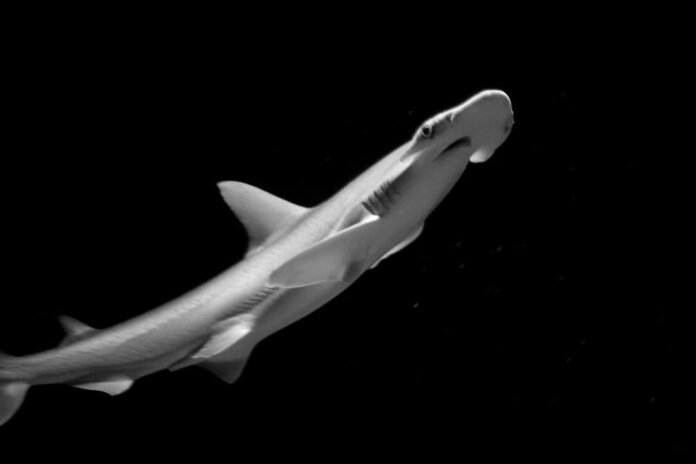By the look, no one can tell that bonnethead is an omnivorous shark species. Also known as the tiburo hammerhead shark, these plant-eating sharks are quite docile as well. There are a lot of interesting things about them, and you will find out below. It is nice to know a thing or two about a fierce-looking shark with a simple diet like them, right? Let’s take a look and see if you think that bonnethead is fascinating.
1Appearance

Because bonnethead is a species of hammerhead, their appearance is not too different from their carnivorous cousins. If you look closely, you can recognize a bonnethead by its narrow head with a rounded front hence. This is why it has the nickname “shovelhead shark”, just another tool. Along with that, a hammerhead’s nostrils are elongated into grooves while a bonnethead’s nostrils are close to its eyes. As for the colors, the back and sides of the shovelhead sharks range from greenish-gray to dark brown with a paler underside. Since they also feed on crustaceans, they have symmetrical front teeth with a sharp central cusp with flattened-blades shape back teeth. These help them to crush the shells of their prey with ease. Bonnethead sharks are the second smallest sharks in the hammerhead family, with a length of 1.5 meters (4.9 feet) long.
2Behavior
There is very little information about the behavior of bonnethead sharks. So far, all we know is that they swim in small groups in their range of tropical waters. Each group contains between 5 to 15 members, but a school from a few hundreds or thousands has been seen. To communicate with their fellow sharks, bonnethead secrete a special chemical called “Cl-excess” or “cerebrospinal fluid”. By doing so, they are not only able to communicate with other sharks but also warn their enemies or predators.
Also, these sharks are active at night so they spend their nighttime foraging on shallow grass flats for invertebrates or plants. When the day times, they move deeper into the seawater. So how about the behavior of bonnethead sharks toward humans? They are neither aggressive nor dangerous to us, and they don’t bite in the waters. In fact, bonnethead sharks are shy in nature so sometimes they prefer to avoid humans. The only time that they would bite is when you mishandle them during catch and release. So far, there is only one recorded unprovoked attack by bonnethead sharks and it was not fatal.
3Feeding & Habitat
As we all know, this hammerhead shark species is omnivorous so human meat is actually off the menu. Generally, they feed on seagrasses but sometimes they also eat crustaceans, octopuses, and small fish sometimes. Their favorite crustaceans to feed on are blue crabs, but bivalves and shrimps are also on the list. Bonnethead sharks have excellent developed nervous systems and sensory that help them to evade predators or prey. Not to mention their exceptional vision that most sharks lack, these sharks never swim hungry.
You can find these herbivorous sharks in both subtropical and tropical waters on both coasts of North America. Bonnethead lives in estuaries and shallow bays with mud, reef habitats, or sand bottoms as well as in coral reefs. Within their ranges, these sharks are abundant mostly in coastal, continental, inshore, and insular shelf areas. Apart from living in shallow waters, they also prefer environments with warmer waters of over 21 degrees Celsius (70 degrees Fahrenheit).
4Predators & Threats
Since they are small, their predators are actually larger sharks such as lemon sharks and tiger sharks. These particular two sharks share the same habitats as bonnethead sharks, making them the potential predators of the bonnethead species. The good thing is that they have a high population, and there is plenty of them in the sea. Although not a threat for now, bonnethead sharks appear to be the by-catch in industrial fishing.
Fun Fact: Bonnethead sharks must remain in motion at all times in order to survive. If they don’t keep swimming continuously, they would sink and die.
Related Post: Harmless Sharks That You Can Swim Nearby




